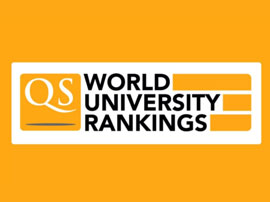- IDP China>
- 课程库>
- 医学与健康>
- 职业健康与临床医学>
- 综合健康科学>
- Doctor of Philosophy in Environmental Health - Exposure Sciences and Environmental Epidemiology (Exposure Sciences)
环境卫生哲学博士-暴露科学与环境流行病学(暴露科学)
Doctor of Philosophy in Environmental Health - Exposure Sciences and Environmental Epidemiology (Exposure Sciences)

学历文凭
Ph.D.

专业院系
Department of Environmental Health and Engineering

开学时间

课程时长

课程学费

国际学生入学条件
IDP—雅思考试联合主办方

雅思考试总分
7.0
了解更多
雅思考试指南
- 雅思总分:7
- 托福网考总分:100
- 托福笔试总分:600
- 其他语言考试:PTE Academic - 68
CRICOS代码:
申请截止日期: 请与IDP顾问联系以获取详细信息。
课程简介
The Doctor of Philosophy (PhD) degree program is a full-time degree program that offers a unique interdisciplinary learning experience where the course of study is individually tailored based on the student's interest in understanding and finding solutions to pressing problems in environmental health and engineering. The goal of PhD training in EHE is to prepare graduates to engage in scholarship and professional practice that creates new knowledge, use research to transform practice and improve the health of the environment and the public, and effectively communicate research findings to the public. The program requires didactic coursework followed by an average of four to five years of research towards a doctoral dissertation (also referred to as a thesis on official forms and committees).<br> Evaluating and preventing or minimizing exposure from airborne, waterborne or foodborne physical, chemical or biological pollutants, and promoting health and safety in occupational and non-occupational environments are major strategies to protect public health. Using principles of chemistry, biology, physics, engineering, epidemiology, risk assessment and mathematics, we develop innovative solutions to environmental contamination problems. We develop techniques to measure contaminants in various media, develop strategies and conduct studies to assess the levels of exposures in populations, evaluate the impact of a hazard, offer solutions on treatment or containment, promote regulations and policies to prevent human or environmental contamination, and perform quality control checks.
相关申请
 预科
预科 奖学金
奖学金 实习机会
实习机会 在校学习
在校学习 跨境学习
跨境学习 校园授课-线上开始
校园授课-线上开始 在线/远程学习
在线/远程学习
学校排名

世界排名12
数据源:泰晤士高等教育世界大学排名
关于约翰霍普金斯大学

关于约翰霍普金斯,学生和家长甚至专业的教育人士间都存在很多误解,比如常常把它认作是常青藤的一员,以及“只有医科拿得出手”等等。其实JHU同样可以为那些非医学类志愿的学生提供很多的机会,它的人文社科和自然科学类的专业同样非常知名。JHU的在校生普遍认为他们正处于学术游戏的顶峰位置,有时候不得不熬夜读书努力钻研以保持这个地位。JHU连续30年成为全美年科研经费最高的大学,根据美国国家科学基金会统计,约翰霍普金斯大学曾一年内从国家科学基金会、国家卫生研究院、国家航空航天局以及美国国防部获得超过15亿美元的科研经费,而这还是发生在07年。整个巴尔迪莫市遍布了JHU的分校,研究中心和合作单位,彼此间还提供免费巴士往返。近70%的霍普金斯学生至少有过一项研究经验。学校通过60项津贴资助每项本科生研究2500美元。霍普金斯是美国学术方面最为严格的学校之一,JHU的课程充满挑战性,但不残酷。大一新生都被安排了学前导师,艺术和理科学生被鼓励到大二之后再决定专业。大一新生可以在他们的第一个学期参与一个基础引导课程,这可以帮助他们轻松的进入大学严格的学术气氛,当度过了这段“蜜月期”之后,学生们又必须认真努力起来,进入艰苦的工作学习之中。要知道,校园里80%的人曾经是他们高中班级的前十名。
本校相关课程

计算机音乐学士学位
学历文凭
Bachelor Degree
开学日期
课程费用总额


写作研讨会文学学士
学历文凭
Bachelor Degree
开学日期
课程费用总额


小说与诗歌艺术硕士
学历文凭
Masters Degree
开学日期
课程费用总额


卫生科学信息学理学硕士-研究
学历文凭
Masters Degree
开学日期
课程费用总额


应用数学和统计学文学硕士/社会学哲学博士
学历文凭
Combined Graduate / Doctoral Degree
开学日期
课程费用总额


社会学哲学博士
学历文凭
Ph.D.
开学日期
课程费用总额

其他相关课程

生物力学与运动科学哲学博士
 特拉华大学
特拉华大学泰晤士高等教育世界大学排名:474
学历文凭
Ph.D.
开学日期
课程费用总额


























